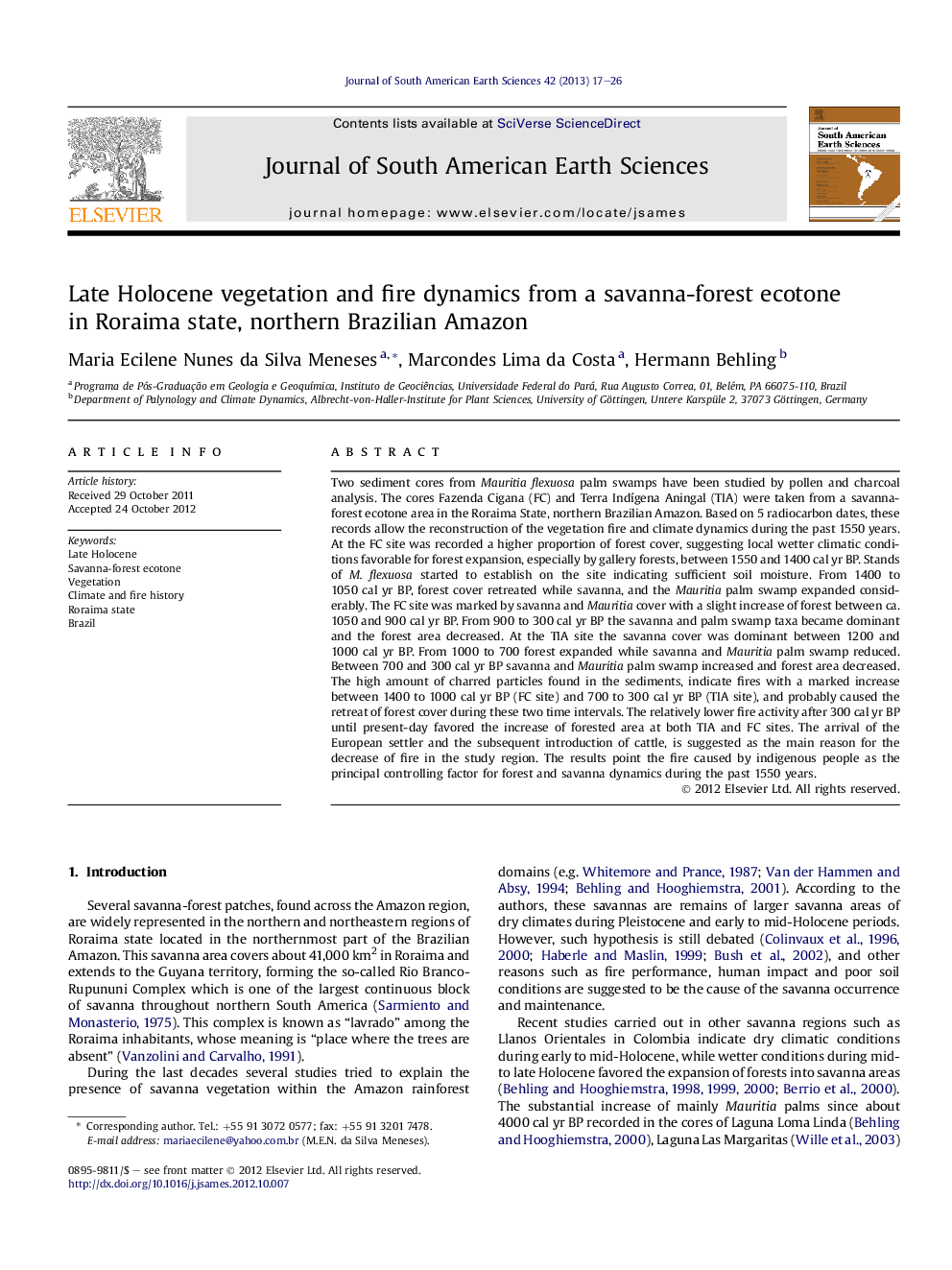| کد مقاله | کد نشریه | سال انتشار | مقاله انگلیسی | نسخه تمام متن |
|---|---|---|---|---|
| 6431456 | 1635167 | 2013 | 10 صفحه PDF | دانلود رایگان |

Two sediment cores from Mauritia flexuosa palm swamps have been studied by pollen and charcoal analysis. The cores Fazenda Cigana (FC) and Terra IndÃgena Aningal (TIA) were taken from a savanna-forest ecotone area in the Roraima State, northern Brazilian Amazon. Based on 5 radiocarbon dates, these records allow the reconstruction of the vegetation fire and climate dynamics during the past 1550 years. At the FC site was recorded a higher proportion of forest cover, suggesting local wetter climatic conditions favorable for forest expansion, especially by gallery forests, between 1550 and 1400 cal yr BP. Stands of M. flexuosa started to establish on the site indicating sufficient soil moisture. From 1400 to 1050 cal yr BP, forest cover retreated while savanna, and the Mauritia palm swamp expanded considerably. The FC site was marked by savanna and Mauritia cover with a slight increase of forest between ca. 1050 and 900 cal yr BP. From 900 to 300 cal yr BP the savanna and palm swamp taxa became dominant and the forest area decreased. At the TIA site the savanna cover was dominant between 1200 and 1000 cal yr BP. From 1000 to 700 forest expanded while savanna and Mauritia palm swamp reduced. Between 700 and 300 cal yr BP savanna and Mauritia palm swamp increased and forest area decreased. The high amount of charred particles found in the sediments, indicate fires with a marked increase between 1400 to 1000 cal yr BP (FC site) and 700 to 300 cal yr BP (TIA site), and probably caused the retreat of forest cover during these two time intervals. The relatively lower fire activity after 300 cal yr BP until present-day favored the increase of forested area at both TIA and FC sites. The arrival of the European settler and the subsequent introduction of cattle, is suggested as the main reason for the decrease of fire in the study region. The results point the fire caused by indigenous people as the principal controlling factor for forest and savanna dynamics during the past 1550 years.
⺠Two Mauritia palm swamp cores were studied using pollen and charcoal data. ⺠Vegetation, climate and fire changes were reconstructed over the past 1550 years. ⺠The wet climate inferred by Mauritia pollen was favorable to forest expansion. ⺠Frequent fires caused the forest retreat and the increase of savanna and Mauritia.
Journal: Journal of South American Earth Sciences - Volume 42, March 2013, Pages 17-26